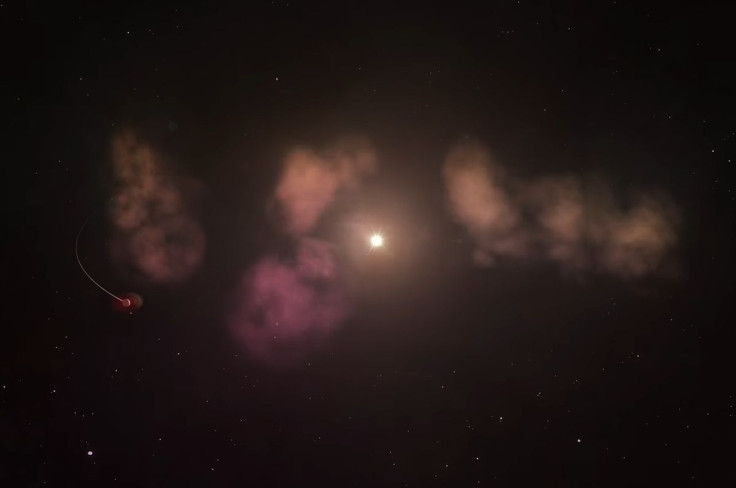Weird 'winking star' 550 light years away could be devouring planets orbiting around it
Located some 550 light years away in constellation Pisces, RZ Piscium is a weird star that has kept astronomers puzzled for a long time.

After a series of observations, an international team of astronomers have posited that RZ Piscium, the star that appears to be winking might actually be behaving like that due to its hunger to feast on nearby planets.
Located some 550 light years away in constellation Pisces, RZ Piscium is a weird star that has kept astronomers puzzled for a long time. It witnesses erratic dimming episodes or periods when its illumination becomes 10 times fainter than it normally is.
Prompted by these cycles, which could last up to two days, a group of astronomers studied the star from multiple space and ground-based telescopes.
Their observations revealed that RZ Piscium radiates far more energy at infrared wavelengths, which not only matches a handful of stars studied over the past 40 years but also suggests that the star is surrounded by a blob of dust and gas.
The reason behind the winking nature was pretty much clear but scientists still needed to know how these clouds came to be.
Usually, dense clouds like these revolve around young stars, a case initially asserted for RZ Piscium. However, after assessing the surface temperature and the amount of lithium developed by the star, the researchers found that it is roughly 30 to 50 million years old, which is a nascent stage by astronomical standards but is old enough to keep the original cloud of dust in place.
"Most Sun-like stars have lost their planet-forming disks within a few million years of their birth," said Ben Zuckerman, a member of the team which undertook the research.
Further analysis of the star's environment revealed that most of the material is orbiting about 50 million kilometres from the star. As this is as close as Mercury is to Sun, the researcher posited "RZ Piscium hosts so much gas and dust after tens of millions of years means it's probably destroying, rather than building, planets."
The exact reason still remains unclear, but researchers narrowed down the explanations to two possible scenarios. One that suggests the star's gravitational pull stripped materials from nearby planets and swallowed them up, and other that suggests gas-rich planets collided among themselves, creating the debris in question.
"Although there could be other explanations, we suggest this material may have been produced by the break-up of massive orbiting bodies near the star," said Kristina Punzi, the lead author of the paper published in The Astronomical Journal.





















